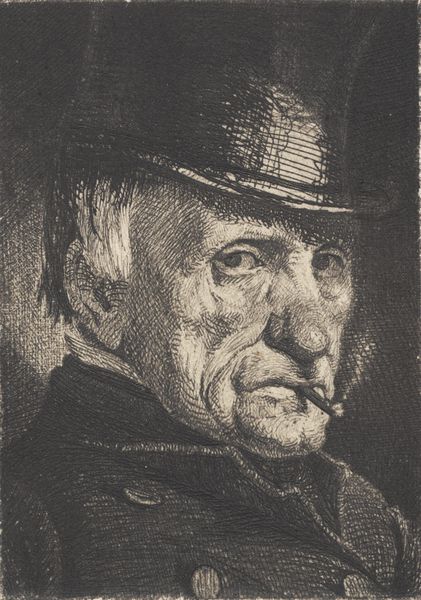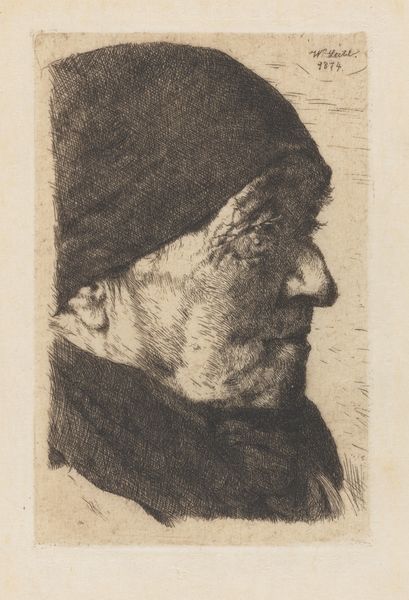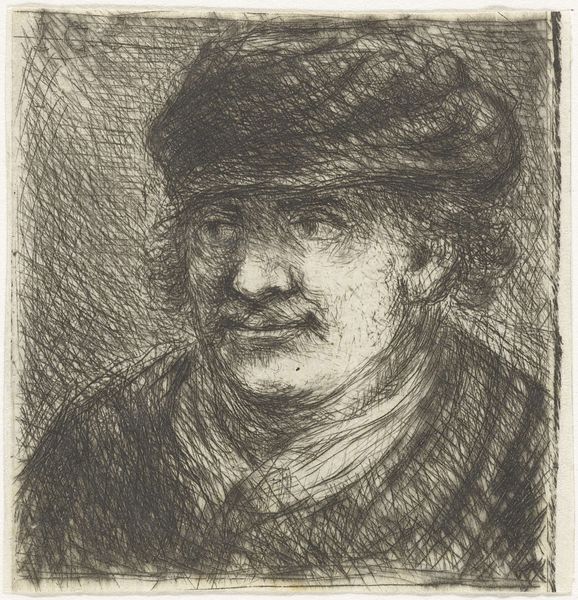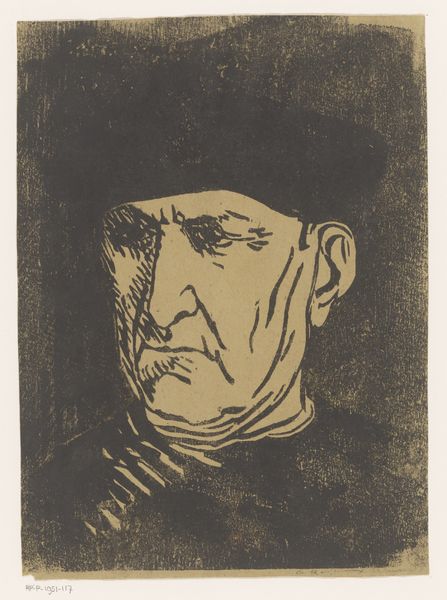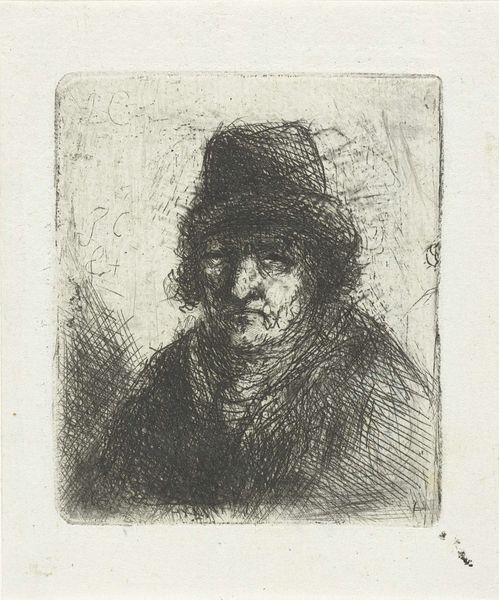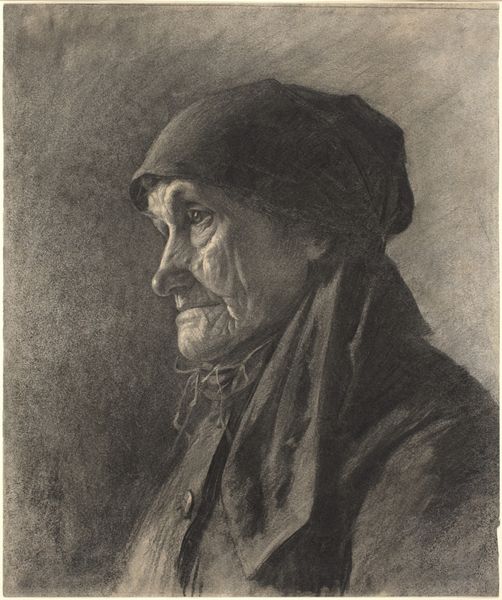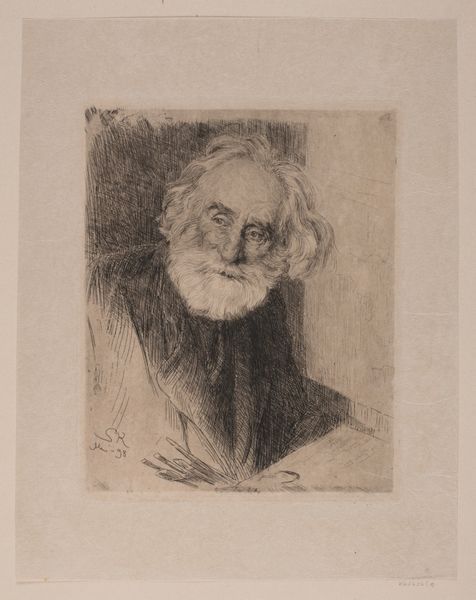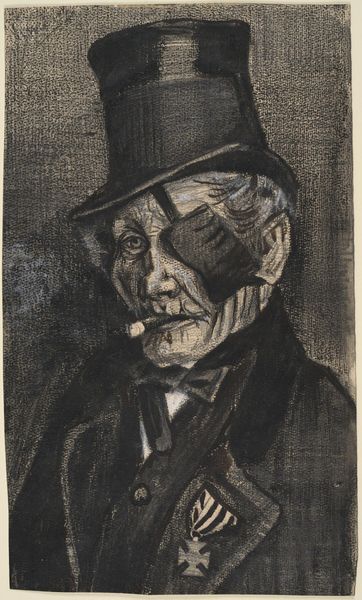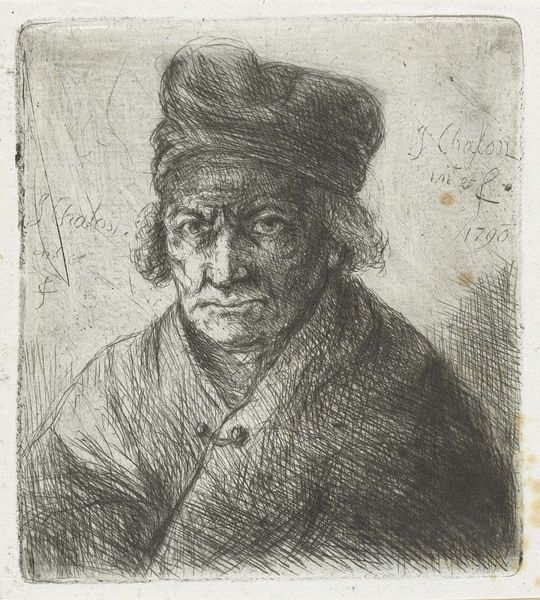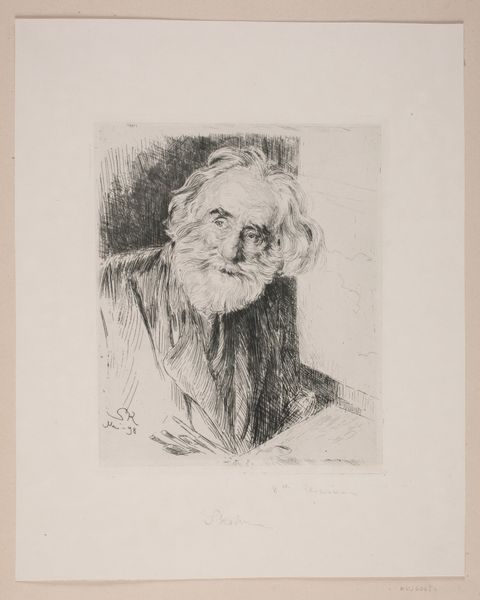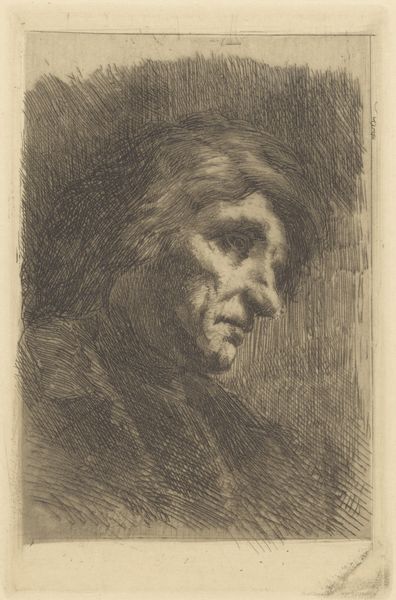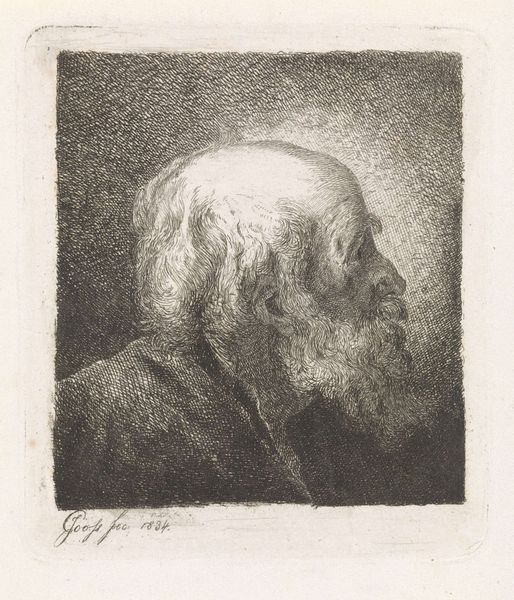
print, etching
#
portrait
# print
#
etching
#
pencil sketch
#
charcoal drawing
#
pencil drawing
#
portrait drawing
#
realism
Dimensions: height 140 mm, width 109 mm
Copyright: Rijks Museum: Open Domain
Curator: Here we have Frans Schikkinger's "Gezicht van een man met een bril," likely created sometime between 1848 and 1902. It's an etching, a print, really capturing a striking portrait. What's your immediate response to it? Editor: It’s stark, almost unsettling. The subject's intense gaze, amplified by the spectacles, combined with the visible marks of age and the pipe, it speaks of resilience, maybe even defiance, in the face of hardship. Who was this person? Curator: Technically, observe how the etching emphasizes form through contrasting areas of shadow and light. The diagonal lines that construct the facial topography, almost sculptural, particularly around the cheeks and brow... It's all incredibly efficient mark-making to yield such strong verisimilitude. Editor: I'd venture beyond the technical prowess and consider the power dynamics at play. Who has the authority to depict, and whose stories are typically omitted from artistic narratives? This man with a pipe... could he be an artisan or an intellectual on the fringes, now given enduring representation through this medium? The image refuses any hint of idealization. It's about bare existence. Curator: A crucial distinction is Schikkinger’s pursuit of realist style, evident in the subject’s precise depiction, far removed from traditional academic or romantic ideals. And notice how the tight crop of the image forces the viewer into immediate intimacy. The texture created with layered etching defines all edges with sharp delineation. Editor: This begs the question: What are the politics of observation here? Is it celebrating the unsung heroes, or inadvertently reproducing existing social hierarchies simply by offering visual attention? And why printmaking? As a democratic and reproducible medium, does this democratize art viewing or propagate limited perspectives? Curator: The artist provides a masterclass in line quality here, directing the eye over subtle curves of the face to the bold statements made through tone to model clothing and features. Such detailed texture and structure... the face really dominates. Editor: Dominance can often be an illusion or part of a performance. Considering those dark and hidden eyes, are we really *seeing* him, or seeing only what Schikkinger wants us to see within the conventions and cultural assumptions of the late 19th century? The image opens doors—or perhaps reveals preexisting limitations. Curator: Exactly. The print invites deep looking. Editor: Yes, it prompts deeper questioning.
Comments
No comments
Be the first to comment and join the conversation on the ultimate creative platform.
